European Cinema History: The French New Wave & ‘Breathless’ (À bout de souffle)
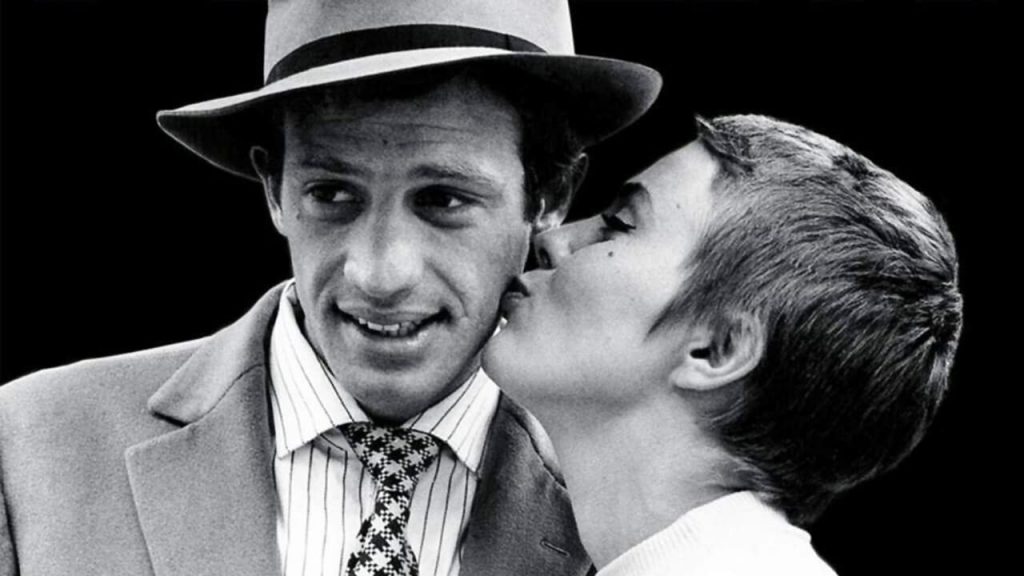
In the late 1950s and early 60s, the way we looked at the cinema was changed forever. The nouvelle vague, or French ‘new wave’ was an artistic and innovative movement whose adherents were prolific, took risks, broke all the rules regarding a “cinema of quality”, and ultimately challenged audience expectation. They were true revolutionaries of film and champions of it as an art form. They inspired Andrew Sarris to write about the auteur theory, and they were as significant an influence on the future of filmmaking as Shakespeare was on modern English Literature.
Directors such as Francois Truffaut, Claude Chabrol, Alain Resnais, Eric Rohmer and Jean-Luc Godard were among fresh, young, enthusiastic artists, with their own designs on challenging the Hollywood formula of narrative and embracing the styles of neo-realism. They did, however, celebrate classic Hollywood cinema and such legends as Charlie Chaplain, Alfred Hitchcock and Orson Welles. They were very interested in film criticism and filmmaking as an art form.
Many of the most celebrated modern-day directors have been influenced by films of the french new wave. Quentin Tarantino, Martin Scorsese, Francis Ford Coppolla, Wim Wenders, Jim Jarmusch, Bernardo Bertolucci, Paul Thomas Anderson, Mike Figgis, Steven Soderbergh, Richard Linklater and Oliver Stone are just a few big names that have been influenced by this wonderful and groundbreaking period in cinema.
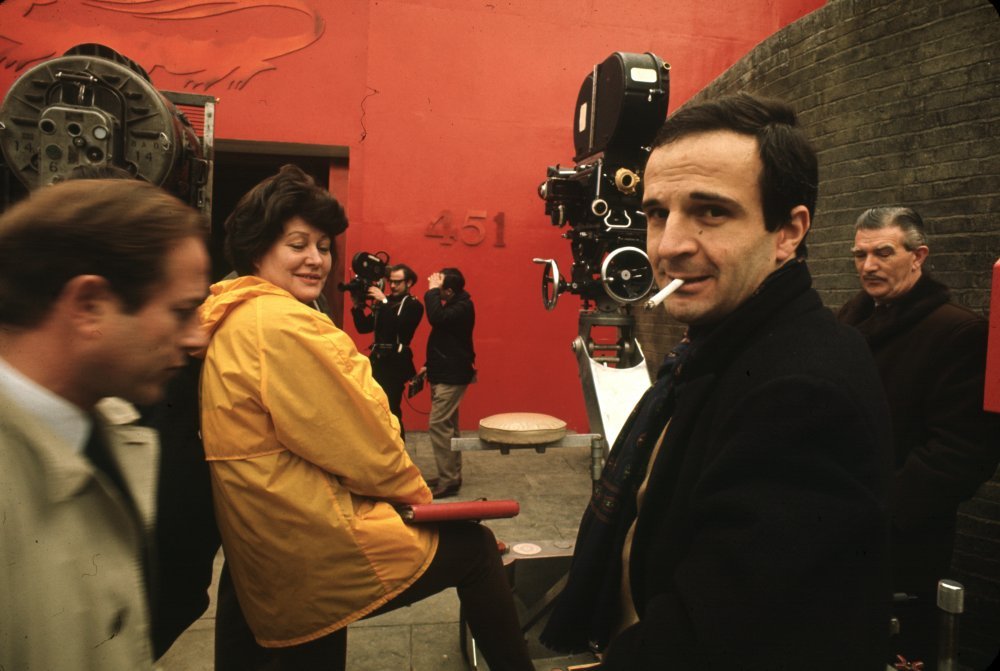
.Post World War Two, France was a decadent, prosperous and rather conservative country. The safety of ‘Le Cinema du Papa’ and the insistence upon a spoon-fed narrative style was torn apart by the new wave. Like most other western countries at the turn of the 1960s, France saw the rise of a youth counter-culture, with its own ideas about the future and the interpretations of life.
As in all capitalist societies, money also had a lot to do with the birth of this movement. With less money for production, filmmakers and producers were forced to improvise with meagre sums of cash. This is thought to have served the ‘auteur’ by forcing him to find the more realistic and tenable representations of life and art without the aid of elaborate costumes and make-up, giant sets or armies of extras. As a result, the films are personal, close up and plausible.
The shaky camera work and unexpected jump cuts were used to give us the sense of entering the world of the movie in a dream-like state, one minute here following him, the next elsewhere following her… en plus, en plus, en plus.
“The New Wave was freedom of expression, a new fashion of acting, and even a great reform on the level of make-up. I was part of a new generation that refused to wear the two inches of pancake-based paint and hairpieces that were still standard equipment for actors. Suddenly, you saw actors who looked natural, like they had just gotten out of bed.”
Francois Brion in ‘La nouvelle vague’
If the New Wave must be summed up in a simple word, then that word must be ‘style’. The French have a flair for all things chic, and the nouvelle vague is no exception. Whilst watching the film Breathless (1960), or in its original language A Bout de Souffle, I was initially struck by how cool Jean-Paul Belmondo looks. Decked out in drainpipe trousers and a fedora hat, he is the quintessential rogue in Jean-Luc Godard’s 1960 crime drama.
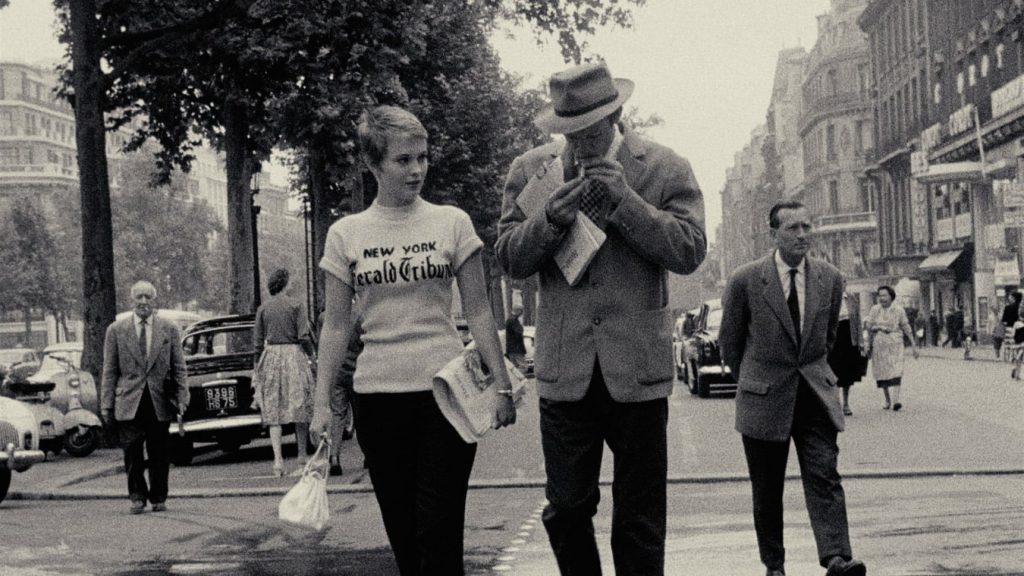
From the outset, the camera work is shaky, having been filmed entirely by a hand-held camera. The locations and lighting are as you might find them if you were in the location yourself, some shots are underexposed, and this is made use of – sometimes to significant effect – by Godard. The editing is fast and employs the use of jump cuts. There are deliberate mistakes in continuity, and the actors sometimes break down the fourth wall to proclaim some pearl of wisdom or another straight to the camera.
Godard intended Breathless to be as close to a documentary as possible, and he achieves this to some degree, particularly in the first half of the film, by constantly moving the camera and giving us a sense of participation as the events unfurl.
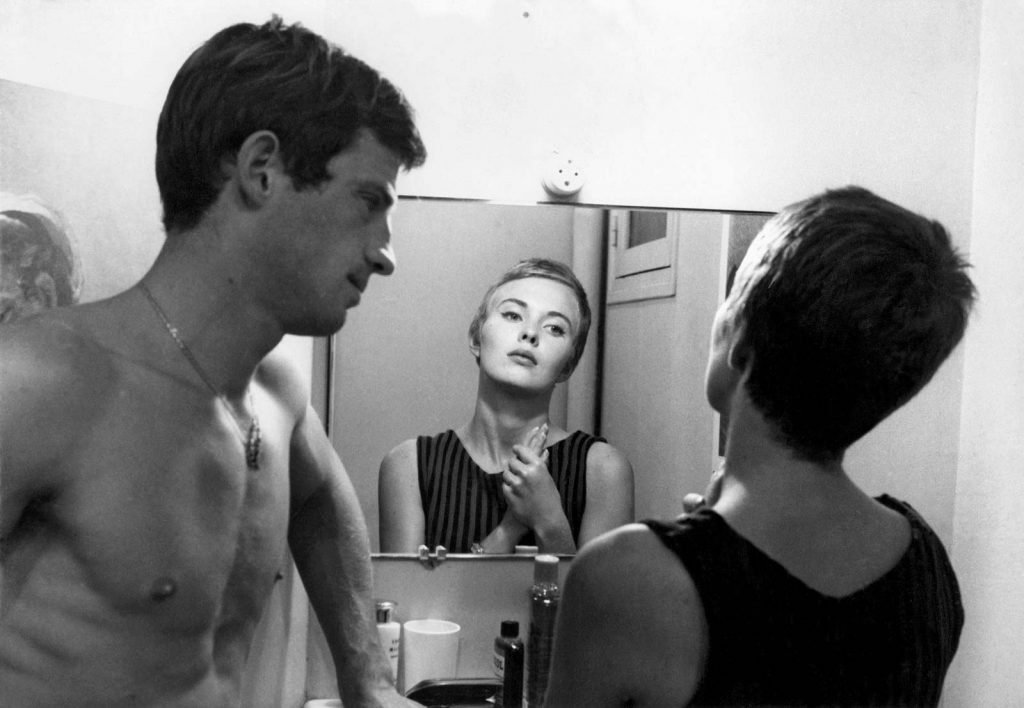
French cinema legend Jean-Paul Belmondo plays Michel, a petty crook who steals cars from strangers and money from his lovers. He is a typical representation of the existentialist ideals that influenced the new wave movement. Michel epitomises the emphasis on the existence of the self and the acceptance of the world’s ridiculous nature. In the first part of Breathless, he kills a policeman and flees to Paris to see an American girl called Patricia, played by the talented and beautiful Jean Seberg.
Michel is pre-occupied with sex, cars, money and escapism. Alternatively, Patricia is the foil to Michel’s hedonistic outlook. She is sensitive, empathetic and innocent. Michel badgers her to run away with him to Rome and pleads with her to let him stay at her apartment and sleep with her. Patricia deflects his advances and rejects his requests but also agrees to meet him again. Her infatuation with Michel is a source of anxiety for her, and Michel’s true feelings are ambiguous.
The two characters serve, to some degree, as an allegory for the new wave attitude toward Hollywood influence and American culture in general. Both France and the United States share a love-hate relationship that is personified in Michel and Patricia’s forms. He is rebellious, masculine and spontaneous. She is ordered, feminine, and to some degree, predictable.
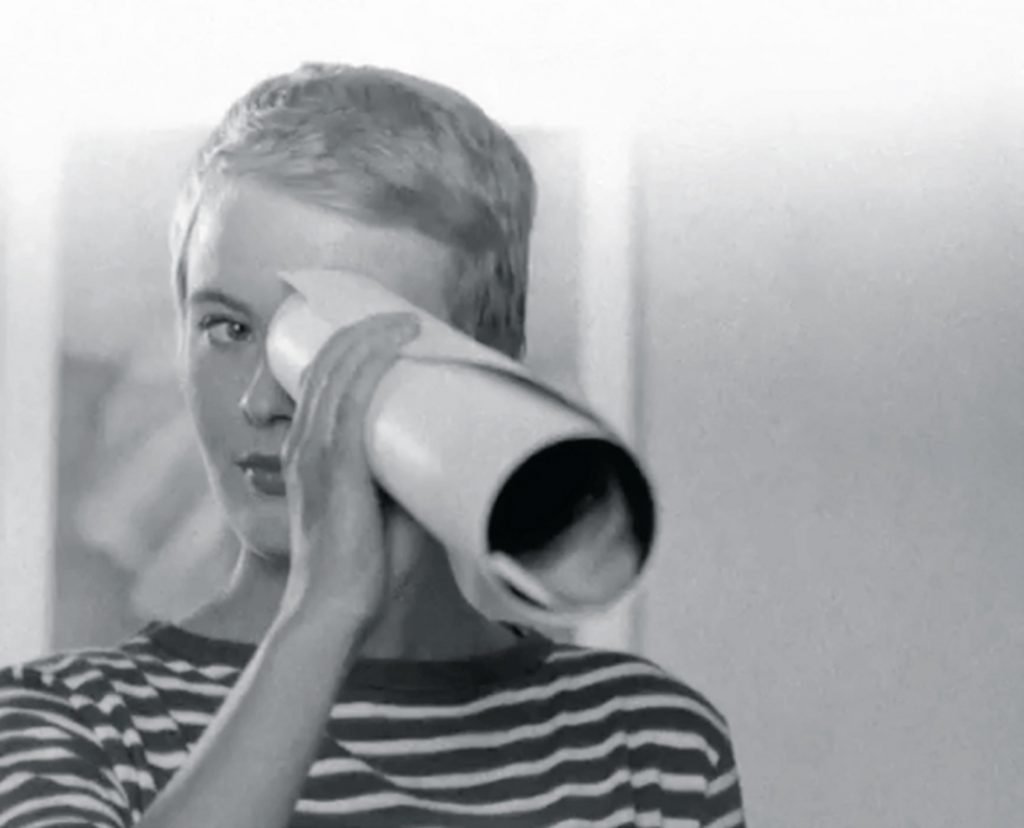
The two spend the next few days in Patricia’s apartment, which Michel has let himself into, in Patricia’s absence. She tells him she might be pregnant with his child; his reaction is typical of his character, cold and unfeeling. Beneath the harsh exterior of nihilistic chauvinism, we begin to witness Michel realise his love for Patricia. In turn, we see her fall for him despite the knowledge that their relationship is ultimately doomed.
When a police inspector confronts Patricia in the street and reveals that Michel has murdered a police officer, the wheels of doom are set in motion. Chasing around Paris trying to find an associate that owes him money, Michel takes Patricia with him and dreams of escaping to Rome before the heat closes in. This is not to be.
Despite her initial participation in Michel’s world, she is ultimately too frightened to see through their escape plan and calls the police to reveal Michel’s whereabouts. Breathless culminates in a celebrated final sequence in which Michel is forced to run from the police with a bullet in his back; he collapses at the end of the street and is surrounded by the pursuing officers and Patricia.
In his dying words, he insults Patricia calling her a “real louse”. There is some debate over the English translation of this expression, and Patricia’s character does not understand it either; she has to ask the police inspector for a translation. So, our intrepid anti-hero is betrayed and left for dead by the woman he loved. The film’s closing shot is of the seemingly unrepentant face of the female lead, staring into the camera and turning away as the shot fades to black.
I was given the impression of an element of misogyny on the part of director and writer Jean-Luc Godard. Throughout Breathless, there are several references to the typical behaviour in both women and men. Patricia’s character seems to be vilified to a certain degree, in one scene in which she is interviewing a famous film director, we hear that the main difference between America and France is that their women control American men, but it is not yet so in France. Can we really label Godard as an out-and-out misogynist? Is it really as simple as all that?
It could be argued that the men are portrayed in an equally unflattering light as mindless self-indulgers who are archaic in their thinking and in need of reform to survive in the modern world, a world in which women are beginning to empower themselves. Perhaps Godard was attempting to give an accurate representation of the male attitude towards women at this time and leaving us, the audience, to decide what exactly is going on.
Breathless is a striking film, full of wonderfully innovative shots. The style employed helps to re-write the rulebook as far as shot composition, narrative and editing techniques are considered. The feel is ‘cool’ in the Miles Davis sense of the word, and the iconic imagery would be imitated and glorified as the epitome of style for many years to come
I have already mentioned a few of the Hollywood directors who have cited Godard and the nouvelle vague as an influence on their work. Tarantino named his production company, ‘A Band Apart’, in honour of the Godard film Bande à Part (1964) and has said how this scene directly influenced the famous dance sequence in his masterpiece Pulp Fiction (1994).
The influence and style of the French ‘New Wave’ can be felt throughout the cinema of the last five decades, and the techniques involved in shooting Breathless (using a mail cart and a wheelchair to act as a dolly, for example) are enough to inspire any budding film student to achieve great results on a shoestring budget. Breathless (1983) was re-made by Hollywood in the 1980s and stars Richard Gere in the lead role. If you’ve seen neither movie, I suggest you watch the original first. However, the Hollywood version is very watchable and has been cited by Tarantino as one of his favourites.
Any movement in art-form changes the perceptions of expectation and challenges the audience to re-think their interpretations of representation. The nouvelle vague lives on in the hearts of today’s genuinely artistic directors, and no doubt the rough, realist style will become popular again in a world where so much chaos surrounds us. Risk-takers, mavericks and loose canons alike will always be looking for a new way to challenge the generic norm and inspire others in their wake to live dangerously until the end.
That’s our review of Breathless!
You can read more of our articles here.
Please join us on social media on Facebook, Instagram, Tik Tok and Twitter. We really appreciate all the likes, shares, retweets etc., and we would love to hear from you and continue the wonderful celebration of all things cinema on these platforms.
If you love to watch videos on YouTube, then please subscribe to our channel here. There’s lots of fun and informative videos uploaded that we hope you will enjoy!
We have a passion for movies and aim to produce entertaining and informative movie-related content. It certainly is a lot of hard work, but we love films so much that it’s worth all the effort. We have to keep the lights on and make sure we have plenty of caffeine to keep all of the articles, videos and social media posts coming, so if you like our work, then please consider supporting us at Buy Me A Coffee here. You can also become a More Movies patron on Patreon here.
To help support us here at More Movies, we do use advertising in a few places, so we appreciate it if you do not use AdBlockers on our site, as this helps keep a few pennies trickling in. We also utilise affiliate links throughout the site, usually to help guide our readers to places to stream, rent or buy the movies we talk about. One of the biggest sources for movies online is Amazon Prime Video, where you can stream over 18,000 films. If you are interested in Prime and haven’t signed up yet, you can get a 30-day free trial via this affiliate link, which helps support us too.

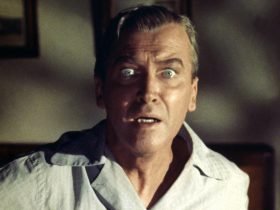
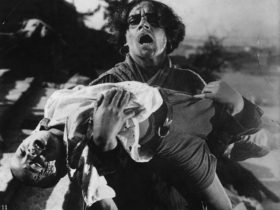


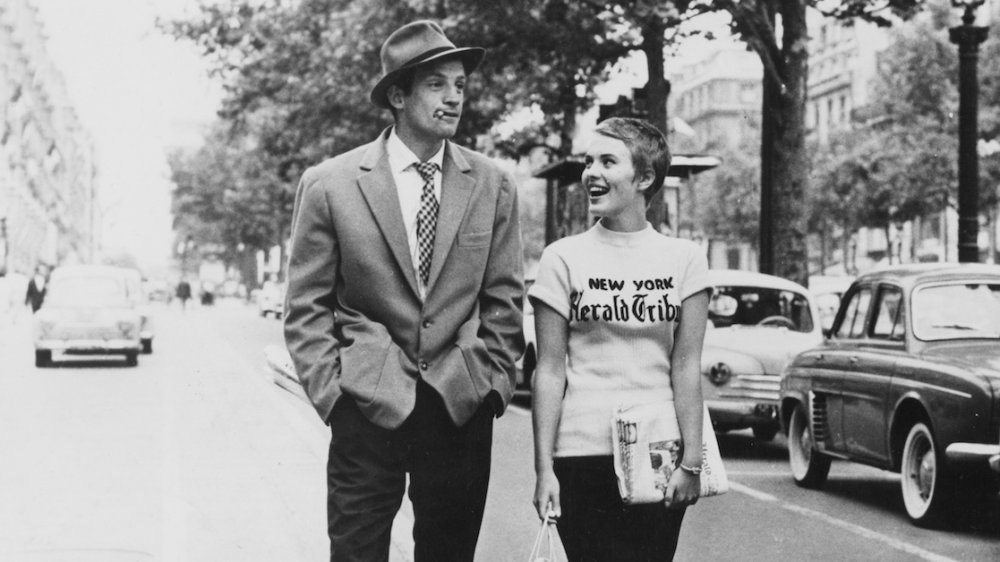


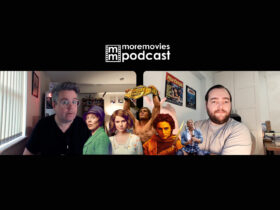



wh0cd219573 20 mg levitra